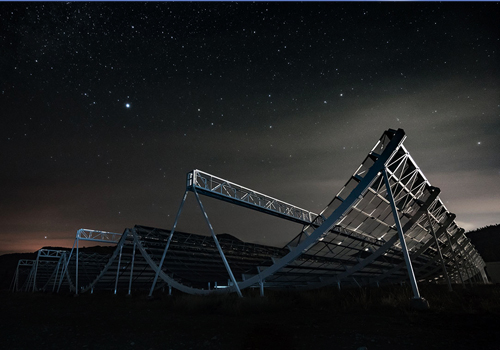The April 2020 discovery of the source of repeating high-intensity blasts of radio emissions in the universe, by a team of scientists that included researchers in the Faculty of Arts & Science at U of T, landed a spot on Science magazine’s top ten list of breakthroughs for the year.
A paper published in Nature in November describes data captured by the Canadian Hydrogen Intensity Mapping Experiment (CHIME), a radio telescope located in British Columbia designed to detect fast radio bursts (FRBs). The research findings suggest magnetars — a type of neutron star believed to have an extremely powerful magnetic field — could be the source of certain FRBs.

“Given the large gaps in energetics and activity between the brightest and most active FRB sources and what is observed for magnetars, perhaps younger, more energetic and active magnetars are needed to explain all FRB observations,” said Paul Scholz, lead author of the Nature study and a Dunlap-NSERC Fellow at the Dunlap Institute for Astronomy & Astrophysics in the Faculty of Arts & Science.
The Dunlap Institute is a member of the CHIME collaboration along with the Department of Physics and the Canadian Institute for Theoretical Astrophysics at U of T, McGill University, the University of British Columbia and the Perimeter Institute among others.
Scholz said in a news release upon the publication of the findings in Nature, that the discovery now provides scientists with a better sense of what to look for in the ongoing search for the sources of the mysterious radio emissions.
In the News:
- Found: elusive source of fast radio bursts
Science | December 17, 2020

